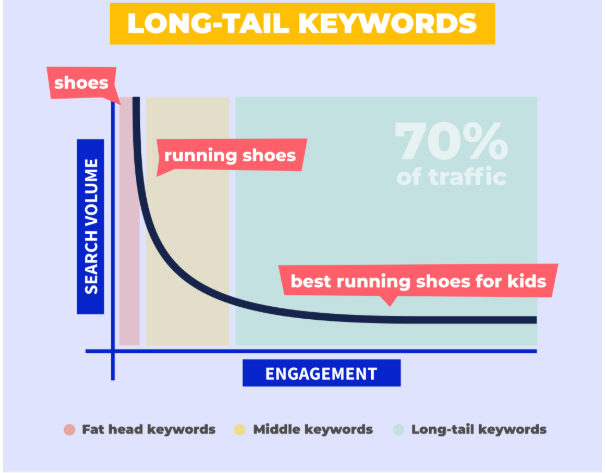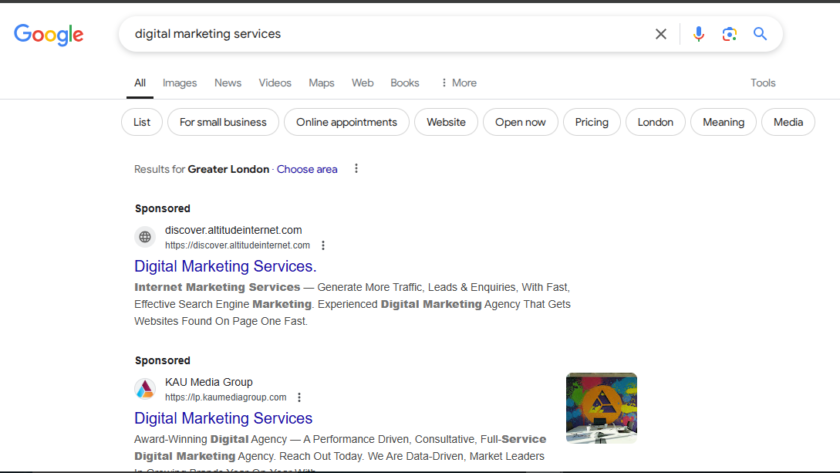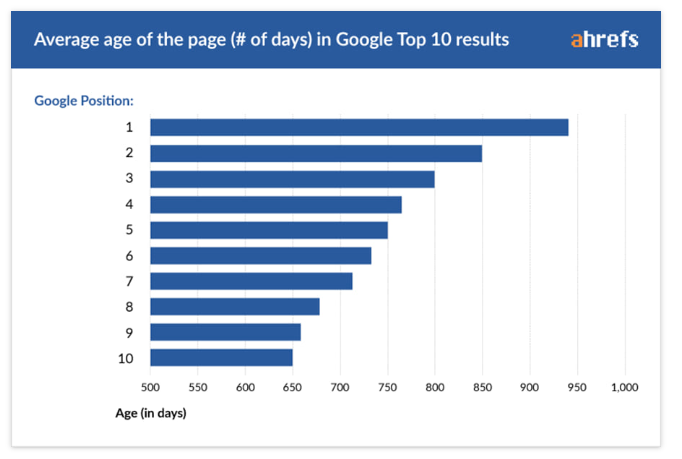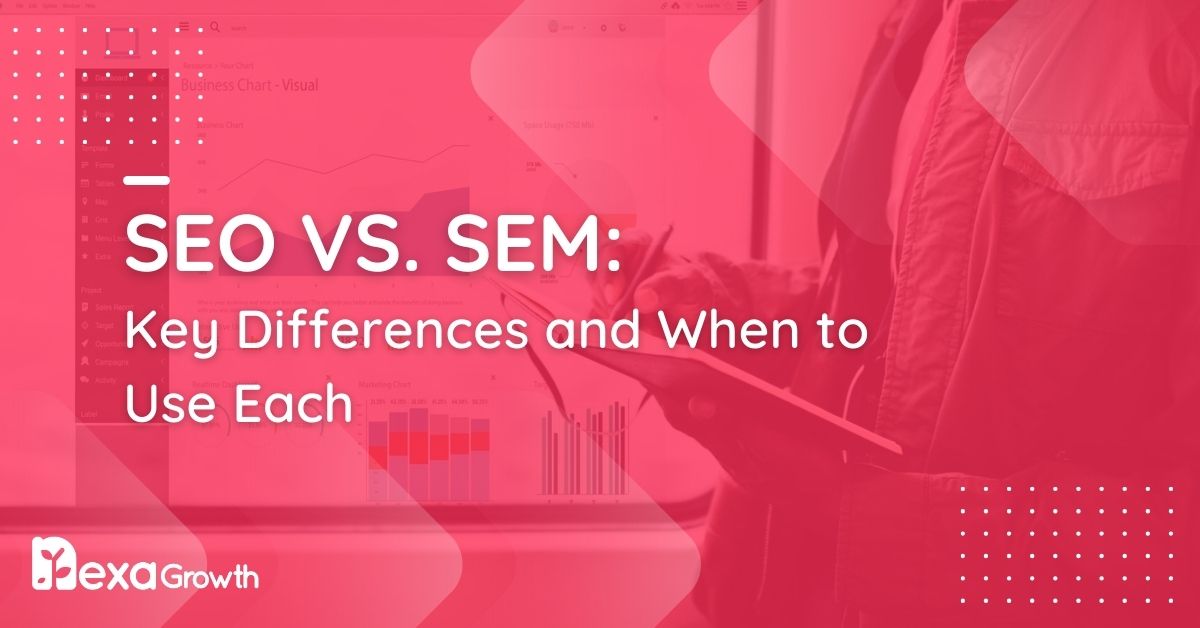- SEO focuses on long-term organic growth, while SEM delivers instant visibility and fast results through paid advertising.
- SEO works by improving a website’s visibility in non-paid search results by ranking higher for relevant keywords.
- SEM is a broader term that includes SEO and paid advertising, primarily using platforms like Google Ads.
- SEO’s key components are keyword research and strategy, while SEM focuses on PPC, bidding strategies, and campaign optimization.
- The best strategy depends on a business’s goals, as SEO is for long-term growth and SEM is for immediate visibility.
If you’re looking to grow your business online, you’ve likely heard of SEO (Search Engine Optimization) and SEM (Search Engine Marketing).
But what exactly is the difference between the two? More importantly, which one should you invest in to get the best results?
SEO and SEM are often used interchangeably, which can be confusing, especially if you’re not a tech expert.
Some believe SEM is just another term for SEO, while others assume SEM is only about paid ads. The reality? SEO is a part of SEM, but it serves different purposes.
So, whether you’re a small business owner, a marketer, or an entrepreneur, understanding how SEO and SEM work is crucial to driving more traffic, leads, and revenue.
In this guide, we’ll discuss SEO vs. SEM, so you can choose the right strategy for your business.
Enjoy SEO & SEM Solutions by Nexa Growth
Boost your online presence, drive targeted traffic, and maximize conversions with Nexa Growth’s expert search marketing strategies.
Contact UsWhat Is SEO?
SEO (Search Engine Optimization) is the process of improving a website’s visibility in organic (non-paid) search results on search engines like Google, Bing, and Yahoo.
The goal of SEO is to increase website traffic by ranking higher for relevant keywords, making it easier for users to find your content, products, or services.
How SEO Works
Search engines like Google use complex algorithms to determine which web pages are most relevant for a search query. These algorithms analyze hundreds of ranking factors, including:
- Content relevance and quality – Pages that provide useful, well-structured content rank higher.
- Keywords and intent – Google prioritizes pages that match user intent behind a search.
- Website authority – Sites with strong backlinks (incoming links from reputable websites) are seen as more credible.
- User experience (UX) – Google rewards fast, mobile-friendly websites with low bounce rates and high engagement.
- Technical optimization – Factors like site speed, structured data, and security (HTTPS) impact rankings.
Related Article: How Does SEO Work? (Crawling, Indexing, and Ranking Explained)
Key Components of SEO
SEO is divided into four main pillars, each playing a crucial role in ranking success:
-
Keyword Research and Strategy
Before optimizing your site, you need to know what your audience is searching for.
- Nearly 92% of keywords get fewer than 10 searches per month, meaning keyword research is critical to targeting the right audience.
- Long-tail keywords (e.g., “best digital marketing agency in London”) often have lower competition and higher conversion rates.

An Infographic by Mangools Showing Engagement and Search Volume of Different Keyword Lengths
-
On-Page SEO
This involves optimizing the content and structure of individual web pages to rank higher. Key elements include:
- Title tags & meta descriptions – Optimized text that appears on Google search results.
- Header tags (H1, H2, H3, etc.) – Heading tags organize your content for better readability and ranking.
- Internal linking – This connects related pages on your website to improve navigation and authority.
- Optimized images and multimedia – Compressing images and using alt text for accessibility and SEO benefits.
-
Off-Page SEO
SEO isn’t just about what happens on your site—external factors also influence rankings. Off-page SEO primarily involves:
- Backlinks – The #1 ranking factor. This involves links from high-authority sites to boost credibility.
- Social signals – Engagement on platforms like LinkedIn, Twitter, and Facebook indirectly helps SEO.
- Brand mentions – Even unlinked brand mentions on authoritative sites can improve trust and authority.
-
Technical SEO
This ensures search engines can crawl and index your site efficiently.
- Page speed – Google prioritizes websites that load in under 3 seconds.
- Mobile-friendliness – Over 62% of searches happen on mobile devices.
- Schema markup – Helps search engines understand and display content better (e.g., rich snippets).
Benefits of SEO
Let’s take a look at some benefits of using SEO.
- Long-term results – Once ranked, organic traffic can continue without ongoing ad spend.
- Higher credibility and trust – 75% of users never scroll past the first page of Google.
- Cost-effective – No need to pay for clicks like in SEM; ROI increases over time.
Challenges of SEO
While effective, SEO can come with some challenges, like:
- Takes time – SEO is a long-term investment; it can take months to see results.
- Requires consistent effort – Content updates, link building, and algorithm changes demand ongoing work.
- Competitive niches are tough – Ranking for high-competition keywords requires strong authority and backlinks.
Dominate Search Results With Expert SEO
Get your business to the top of Google with our data-driven SEO strategies. Increase organic traffic, generate high-quality leads, and outrank your competitors today!
Contact UsWhat Is SEM?
Search Engine Marketing (SEM) is a broader digital marketing strategy that includes both SEO (organic search) and PPC (paid advertising) to improve a website’s visibility on search engines.
While SEO focuses on ranking organically, SEM primarily revolves around paid advertising (PPC) to quickly drive targeted traffic.
How SEM Works
SEM leverages search engine advertising platforms like Google Ads and Bing Ads to bid on keywords and display paid results at the top of search pages.
When users search for a specific term, businesses compete for ad placements based on factors like:
- Bid Amount – How much you’re willing to pay per click (Cost Per Click – CPC).
- Quality Score – A metric Google uses to assess ad relevance, expected CTR (Click-Through Rate), and landing page quality.
- Ad Rank – Determines where your ad appears, factoring in bid + Quality Score.
Unlike SEO, which takes time, SEM delivers instant visibility, making it a preferred strategy for businesses looking for fast results and lead generation.
Key Components of SEM
Let’s take a look at the key components of SEM:
-
Pay-Per-Click (PPC) Advertising
PPC is the core element of SEM, where businesses pay a fee each time someone clicks on their ad.
Google Ads dominates this space, with PPC ads appearing above organic search results.
- Google Ads accounts for a 90% reach worldwide.
- Search ads can increase brand awareness by up to 80%.

An Example of Paid (Sponsored) Ads PPC Ad Types
You can run different kinds of pay-per-click ads, such as the following:
- Search ads – Appear at the top of Google for targeted keywords.
- Display ads – Visual banner ads shown across the Google Display Network.
- Shopping ads – Product-based ads for eCommerce businesses.
- Video ads – Ads on YouTube, the world’s second-largest search engine.
- Local service ads – Pay-per-lead ads for service-based businesses.
-
Audience Targeting and Bidding Strategies
SEM allows precise audience segmentation, ensuring ads reach the right users. Targeting options include:
- Demographic and location-based targeting
- Device-specific targeting (mobile vs. desktop)
- Interest and behavioral targeting
- Remarketing (retargeting past visitors)
Advertisers can use different bidding strategies, such as:
- Manual CPC – Set bids manually per keyword.
- Enhanced CPC – Google adjusts bids based on conversion likelihood.
- Target ROAS (return on ad spend) – Focuses on maximizing revenue for the budget.
-
SEM Campaign Optimization
To improve SEM effectiveness, advertisers need to:
- Optimize ad copy for relevance and CTR.
- A/B test different headlines, descriptions, and CTAs.
- Refine keyword strategy (negative keywords help exclude irrelevant searches).
- Improve landing pages for better Quality Score and lower CPC.
Benefits of SEM
SEM comes with several benefits, including:
- Instant visibility and traffic – Unlike SEO, which takes months, SEM provides immediate exposure.
- Highly targeted approach – Ads are shown only to high-intent users searching for relevant keywords.
- Scalable and measurable results – Businesses can control budgets and measure ROI in real-time.
- Better for short-term goals – Ideal for launching new products, seasonal offers, and limited-time promotions.
Challenges of SEM
It can also have some challenges, such as:
- High costs in competitive industries – CPC varies by industry; competitive industries (legal, finance) can see CPCs over $50 (WordStream).
- Requires continuous investment – Unlike SEO, which builds long-term value, SEM stops driving traffic once ad spending stops.
- Ad fatigue and competition – Users may ignore ads (banner blindness), and competitors may drive up CPC costs.
Drive Instant Leads With Targeted SEM
Maximize visibility and conversions with high-performance Google Ads and PPC campaigns. Let us help you reach the right audience and grow your business faster!
Contact UsSEO vs. SEM: Why This Matters?
Choosing between SEO and SEM can determine how quickly and effectively you grow your business online.
Should you focus on organic rankings (SEO) and play the long game, or should you invest in paid search (SEM) for instant results? Or should you combine both for maximum impact?
In the next section, we’ll break down the key differences, so you’ll know exactly which approach aligns with your business goals—and how to leverage both for long-term success.
Featured Articles: Types of SEO: On-Page, Off-Page, Technical, Local and More
SEO vs. SEM: Key Differences You Need to Know
Now that we have covered SEO (search engine optimization) and SEM (search engine marketing) individually, it is time to compare them side by side.
While both strategies aim to increase search engine visibility, they operate differently and serve distinct purposes.
Let’s compare the differences!
-
Time to See Results
One of the biggest differences between SEO and SEM is the time it takes to see results.
- SEO is a long-term strategy – It can take anywhere from 3 to 6 months to start seeing results, depending on competition, domain authority, and content quality.

Ahref’s Infographic Showing Correlation Between Page Age and Rankings - SEM provides instant visibility – Paid ads appear immediately after launch, making SEM ideal for businesses looking for quick traffic and immediate lead generation.
- SEO is a long-term strategy – It can take anywhere from 3 to 6 months to start seeing results, depending on competition, domain authority, and content quality.
-
Cost Comparison
Both SEO and SEM require investment, but the costs differ significantly.
- SEO has upfront and ongoing costs – While organic traffic is free, SEO requires continuous investment in content creation, link building, and technical optimization.
- SEM involves direct ad spend – Advertisers must pay for each click (CPC), which can be costly, especially in competitive industries. For example, legal and insurance keywords can cost over $50 per click.
- SEO provides better long-term ROI – Once a website ranks, it can generate free organic traffic for months or even years, reducing reliance on paid ads.
-
Traffic Sustainability
- SEO traffic is sustainable – Once rankings are achieved, a website can continue to receive traffic without additional costs. However, maintaining rankings requires ongoing updates and optimizations.
- SEM traffic stops when ads stop – The moment you stop paying for ads, traffic drops to zero. This makes SEM less sustainable as a long-term strategy.
-
Click-Through Rate (CTR) Comparison
- Organic results get more clicks – Studies show that 70% to 80% of users ignore paid ads and focus on organic results.
- SEM dominates for high-intent searches – Paid ads work best for transactional keywords where users are ready to buy, such as “best digital marketing agency near me”.
When Should You Use SEO?
SEO is ideal when:
- The goal is long-term growth and sustainability.
- The business wants to establish authority and trust in an industry.
- The budget does not allow for ongoing paid advertising.
- The focus is on content marketing and organic lead generation.
When Should You Use SEM?
SEM is a better option when:
- A business needs instant traffic and lead generation.
- The focus is on short-term campaigns, seasonal promotions, or product launches.
- There is a highly competitive industry where ranking for organic keywords is difficult.
- The website is new, and SEO has not yet gained traction.
When Should You Use Both SEO and SEM Together?
Combining SEO and SEM can maximize visibility and ROI. A hybrid approach works well when:
- The business wants short-term traffic (via SEM) while building long-term organic authority (via SEO).
- PPC campaign data is used to identify high-converting keywords that can be targeted for SEO.
- SEO rankings help reduce reliance on paid ads over time, lowering acquisition costs.
Advanced Strategies for Leveraging SEO and SEM Together
While SEO and SEM are often viewed as separate strategies, combining them can create a marketing approach that maximizes traffic, conversions, and overall search visibility.
Businesses that effectively integrate organic and paid search can gain a competitive edge, reduce customer acquisition costs, and improve overall marketing efficiency.
-
Use PPC Data to Refine SEO Strategy
One of the biggest advantages of SEM is that it provides immediate insights into keyword performance, audience behavior, and conversion rates.
- Identify high-converting keywords – PPC campaigns reveal which keywords drive the most conversions. Businesses can then prioritize these keywords for SEO efforts.
- Understand search intent – SEM data helps analyze which ad copy, CTAs and landing pages generate the best response, allowing for optimized organic content.
- Test new keywords before optimizing for SEO – Instead of investing months into SEO for a keyword that may not perform, SEM allows businesses to test keyword effectiveness within days.
-
Use SEO to Lower SEM Costs Over Time
Over-reliance on SEM can be expensive, especially in competitive industries. By improving organic rankings, businesses can gradually reduce their dependence on paid ads.
- SEO can capture traffic for high-CPC keywords – Instead of paying for clicks on expensive keywords, ranking organically for them provides free traffic.
- Improved Quality Score lowers CPC in SEM – Google assigns Quality Scores based on ad relevance, landing page experience, and expected CTR. Websites with strong SEO often have higher Quality Scores, leading to lower PPC costs.
-
Dominate Search Engine Results Pages (SERPS)
Ranking both organically and through paid ads can increase credibility and double brand visibility on search results.
- Users are more likely to click when a brand appears twice – Studies show that combining paid and organic listings can increase total clicks by 25%.
- Push competitors further down – Owning multiple positions on the SERP reduces visibility for competitors, making it harder for them to capture clicks.
-
Leverage Remarketing for Returning Visitors
SEO drives traffic, but not all users convert on their first visit. Remarketing through SEM allows businesses to re-engage visitors who interact with SEO-driven content.
- Display ads for previous website visitors – Retarget users who visited an SEO-driven blog post but did not convert.
- Promote special offers to organic visitors – Businesses can serve exclusive promotions via PPC to users who previously engaged with their website.
-
Optimize Landing Pages for Both SEO and SEM
- Ensure a seamless experience between organic and paid traffic – Landing pages optimized for both SEO and PPC should match user expectations and intent.
- Use clear CTAs and persuasive copy – Whether the traffic comes from Google Ads or organic rankings, conversion-focused content increases ROI.
Case Studies: Real-World Examples of SEO & SEM Synergy
To demonstrate the effectiveness of combining SEO and SEM, here are real-world examples of businesses that successfully used both strategies:
-
REI
REI is a great example of a brand that successfully combines SEO and SEM. They have a strong organic presence, ranking highly for relevant keywords like “outdoor gear” and “camping equipment.”
They also use paid search ads to target specific products and promotions.By combining these strategies, REI reaches a wider audience and drives more traffic to its website.
-
Nike
Nike is another brand that excels at combining SEO and SEM. Its website is optimized for relevant keywords, and it use paid search ads to target specific demographics and interests.
Nike also uses paid social media ads to reach potential customers on platforms like Facebook and Instagram.
In doing so, the brand reaches a large audience and promotes its products effectively.
-
Looka
Looka is a company that uses AI to create logos and brands for its customers. It has a strong organic presence, ranking highly for relevant keywords like “logo maker” and “brand design.”
Looka also uses paid search ads to target specific demographics and interests. By combining these strategies, Looka can reach a wider audience and generate more leads.
-
Pepsi
Pepsi is a brand that has been using SEO and SEM for many years. Its website is optimized for relevant keywords, and it uses paid search ads to target specific demographics and interests.
Pepsi also uses paid social media ads to reach potential customers on platforms like Facebook and Instagram.
Conclusion
By now, it is clear that SEO and SEM are not competing strategies—they are complementary. The right approach depends on:
- Short-term vs. long-term goals – If immediate traffic is needed, SEM is the best option. For sustainable growth, SEO is essential.
- Budget considerations – Businesses with high ad spend can leverage SEM, while those with limited budgets should focus on organic SEO growth.
- Competition level – In highly competitive industries, a hybrid approach using both SEO and SEM is often the best strategy.
For most businesses, the most effective approach is to use SEO for long-term brand authority while leveraging SEM for quick wins and high-intent conversions. When executed together, these strategies can significantly enhance search visibility, traffic, and ROI.
Get a Custom SEO & SEM Strategy for Your Business
Whether you need long-term organic growth or quick wins with paid ads, we create tailored strategies to help your business succeed online.
Contact UsFAQs
1. Is SEO or SEM better for a new website?
2. Can SEO and SEM work together to improve conversion rates?
3. Does SEM affect SEO rankings?
4. What are the biggest mistakes businesses make with SEO and SEM?
- Not aligning SEO and SEM strategies – Treating them as separate tactics instead of integrating them for better results.
- Focusing only on PPC and ignoring SEO – This leads to higher long-term costs, as businesses continue paying for traffic indefinitely.
- Targeting the wrong keywords – Choosing high-cost PPC keywords that do not convert well or optimizing SEO for terms with little search intent.
- Ignoring landing page experience – Poorly optimized landing pages can lead to high bounce rates and lower ROI for both organic and paid traffic.

